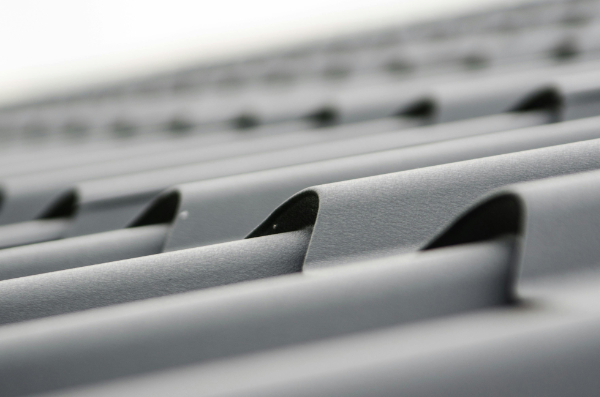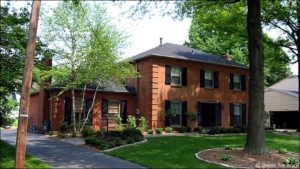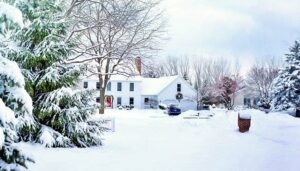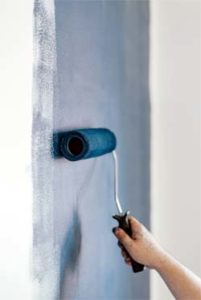Maintaining your roof is not just about curb appeal but more importantly the overall safety and longevity of your home. In regions subjected to harsh climates—be it blistering heat, heavy snowfall, or relentless rain—the challenges to maintaining a roof can be particularly severe. In this piece, we’ll look at nine roof preservation techniques that every homeowner will be wise to know.

9 Roof Preservation Techniques
These environmental stressors can swiftly compromise a roof’s integrity, leading to costly repairs or replacements if not properly managed. Understanding the specific techniques for preserving a roof under these demanding conditions can significantly prolong its life and enhance the home’s energy efficiency.
1. Choosing the Right Materials
The first step in our list of roof preservation techniques begins with the roof itself. Having a roof made of the materials that are best suited to withstand the local climate is highly important. For instance, in areas with heavy snowfall, a sloped roof made of metal can help prevent snow accumulation.
Conversely, in hot, sunny climates, tiles made from terra cotta or slate can reflect sunlight, helping to keep homes cooler while reducing the burden on air conditioning systems. The key is to choose materials that are known for their durability and climatic suitability, ensuring they can endure the specific challenges posed by the environment.
2. Professional Installation Matters
A roof’s effectiveness and lifespan are greatly influenced by the quality of its installation. Faulty installation can lead to numerous problems, such as leaks, increased wear and tear, and even roof failure during extreme weather conditions. To ensure a roof is installed correctly, it is crucial to hire a reputable contractor. By searching for a high-quality roof installation near me on a search engine, you’ll be able to find experienced professionals in your area. A competent roofing contractor will not only use the right techniques but also understand the local building codes and climatic demands, providing peace of mind and added resilience to the roof.
3. Regular Inspections and Maintenance
Routine roof inspections are vital to catch and address potential roofing issues before they escalate into major problems. It is recommended to inspect at least twice a year and after any severe weather event. During these inspections, a professional will look for signs of damage such as cracked or missing shingles, compromised seals, or issues with drainage systems. Timely identification of these issues allows for immediate repairs, which can prevent further damage and extend the roof’s lifespan.
4. Proper Insulation and Ventilation
Insulation and ventilation play a critical role in the overall health of a roof. Proper insulation helps maintain a consistent temperature in the attic, preventing the formation of ice dams in winter and reducing heat accumulation in summer.
Adequate ventilation ensures there is enough air circulation to keep the attic dry and cool, which helps prevent moisture buildup and the resultant rot or mold, which can weaken roofing materials. Homeowners should ensure that their roofing system includes adequate insulation and is properly ventilated to match the local climate demands, optimizing the roof’s performance and durability.
5. Applying Protective Coatings
Applying a protective coating is an excellent way to enhance a roof’s defense against harsh weather conditions. These coatings can be reflective or designed to provide a waterproof barrier, depending on the climate.
In hot climates, reflective coatings are particularly beneficial as they can significantly reduce cooling costs by reflecting sunlight away from the building. Waterproof coatings, on the other hand, are ideal for areas that experience heavy rainfall, providing an extra layer of protection against water infiltration. Such coatings not only extend the roof’s life but also improve its overall efficiency and effectiveness in climate control.
6. Cleaning Gutters and Downspouts
Keeping gutters and downspouts clear is essential to prevent water buildup and reduce the risk of ice damming, which can cause severe damage to a roof. Gutters clogged with leaves, twigs, and other debris can impede proper water flow, leading to water seepage under roof tiles and into the structural components of a home. Regular cleaning, especially before and after the wet season, ensures that water can flow freely away from the roof and foundation, protecting the integrity of the roof and the home itself.
7. Repairing Damage Promptly
Addressing repairs promptly is crucial in preventing minor issues from developing into major problems. Whether it’s replacing a few damaged shingles or sealing a small leak, early intervention can save homeowners significant expenses down the line. Ignoring even minor damage can lead to larger, more complex issues, such as structural damage or mold growth, which are not only more costly to address but can also pose health risks to residents.
8. Choosing Impact-Resistant Materials for Storm-Prone Areas
For homes in areas prone to severe weather events like hailstorms or hurricanes, using impact-resistant roofing materials can prevent significant damage. Materials such as rubberized roofing or modified asphalt shingles are designed to absorb and dissipate energy from falling debris and hail, protecting the roof from punctures and cracks. These materials often come with higher upfront costs but can lead to long-term savings by reducing the need for frequent repairs and replacements.
9. Educating Yourself on Roof Lifespan and Replacement Indicators
Understanding the lifespan of different roofing materials and recognizing signs that indicate the need for a replacement can help homeowners make informed decisions about roof maintenance. Each material, from asphalt shingles to metal roofing, has a typical lifespan, after which the risks of leaks and other failures increase. Signs such as widespread staining, multiple leaks, and brittle or curling shingles can indicate that it’s time to consider replacing the roof rather than continuing to invest in repairs.
Conclusion
Understanding these roof preservation techniques, whether you live in harsh climates or not, increases the likelihood that you’ll make the right choices about your home’s roof. By adopting the right techniques and materials, homeowners can enhance their roof’s durability and functionality, ensuring it stands up to the challenges posed by their local weather conditions.
Regular maintenance, prompt repairs, and strategic upgrades are key to prolonging the life of a roof and maintaining the overall safety and value of the home. In doing so, homeowners not only protect their investment but also ensure a safe and comfortable living environment for years to come.



